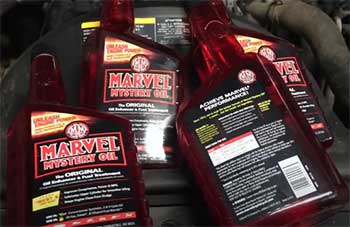Let me tell you, if you’re staring at cloudy headlights, scratched plexiglass, or hazy plastic windows, Meguiar’s PlastX is your new best friend. This isn’t just another car care product—it’s a game-changer that restores clarity and saves you from pricey replacements.
I’ve used it, loved it, and I’m betting you will too.
In this article, I’ll share my real-world experience, break down the pros and cons, compare it to other brands, and give you maintenance tips to keep your plastics sparkling. Trust me, you’ll want this in your detailing kit today.
My Journey With Meguiar’s PlastX
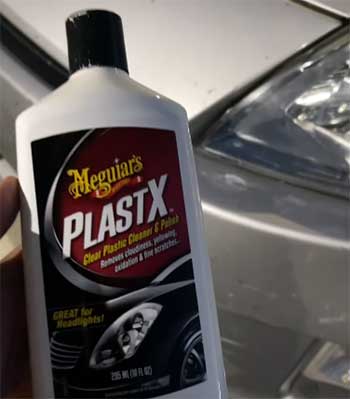
Picture this: I’m cruising down the highway on my Can-Am Spyder, the wind in my face, the sun glinting off my sleek black fender.
Life’s good—until a rogue rock, the size of a golf ball, comes flying at me at 70 mph.
It smacks my brand-new plexiglass windshield, leaving three ugly scratches that make my heart sink.
This windshield wasn’t cheap, and I’m not about to shell out for another one. Enter Meguiar’s PlastX, a product I’d heard whispers about in motorcycle forums.
I figured, why not give it a shot?
I grabbed a bottle from my local auto store, rolled up my sleeves, and got to work.
The gel’s texture surprised me—thick, almost creamy, with a faint, pleasant scent that didn’t make me gag like some other polishes I’ve tried.
I applied a small dab to a microfiber cloth and started working it into the scratches, using gentle circular motions. It wasn’t a one-and-done miracle; it took some elbow grease and a few passes. But each time I wiped the residue off, I could see those scratches fading.
The deepest one didn’t vanish completely, but it became barely noticeable, and the surrounding area? Polished to a crystal-clear shine that made my windshield look almost new.
I didn’t stop there. That same rock had grazed my fender, leaving a few light scuffs. I tested PlastX on a small, hidden spot first (always a good move with any new product), and when I saw no damage, I went for it.
A few minutes of rubbing, and those scuffs were gone—like they’d never existed. I was floored. This stuff wasn’t just for plexiglass; it worked wonders on painted plastic too. My Spyder was back to its showroom glory, and I felt like I’d won a small victory against the universe.
That’s when I knew PlastX was earning a permanent spot in my garage.
What Makes Meguiar’s PlastX Special?
Let’s talk about what sets PlastX apart. This isn’t your average polish. It’s packed with Meguiar’s Microscopic Diminishing Abrasive Technology (MDAT), which sounds fancy but basically means it uses tiny abrasives that break down as you work, so you’re not grinding away at your plastic like you would with harsher compounds.
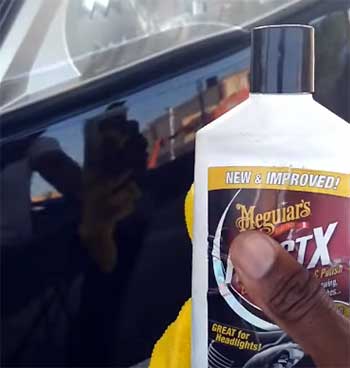
It’s gentle enough for delicate surfaces like convertible top windows or motorcycle visors but tough enough to tackle light scratches, oxidation, and that dreaded yellow haze on headlights.
Plus, it leaves behind water-resistant polymers that help protect your plastics from future damage.
It’s like a shield and a polish in one.
The versatility is what really gets me.
You can use it on headlights, taillights, plexiglass, CDs, even helmet visors. If it’s clear plastic and it’s looking rough, PlastX can probably help.
And it’s not just for cars—think boat windows, vintage trailer panels, or even those scratched-up plastic gauge covers on your motorcycle.
The fact that it’s non-toxic and solvent-free is a bonus, especially if you’re working in a small garage like mine where ventilation isn’t great.
Pros of Meguiar’s PlastX: Why I’m a Fan
- Versatility Across Plastic Surfaces
One of the biggest reasons I keep reaching for PlastX is its ability to work on so many different surfaces. I’ve used it on my motorcycle’s windshield, my car’s headlights, and even the plastic cover on my boat’s instrument panel.
Each time, it delivers. Whether you’re dealing with rigid plastics like headlights or flexible ones like convertible windows, this stuff adapts. It’s like having a Swiss Army knife for plastic restoration. You don’t need a dozen different products cluttering your shelf—just one bottle of PlastX.
- Effective Scratch and Haze Removal
Let’s be real: scratches and cloudiness can make your vehicle look tired. PlastX tackles both with surprising ease. On my Spyder’s windshield, it didn’t just polish the surface; it visibly reduced those rock-induced scratches.
On my wife’s Honda Accord, the headlights were starting to yellow, cutting down on light output at night. A few minutes with PlastX and a soft cloth, and they were nearly crystal-clear again. It’s not magic—it won’t erase deep gouges—but for light to moderate damage, it’s a lifesaver.
- Ease of Use for Beginners
I’m no professional detailer, and you don’t need to be either. PlastX is straightforward: dab some on a cloth or foam pad, rub it in, wipe it off. No complicated steps or expensive tools required. Sure, a buffer can speed things up, but I got great results by hand.
The gel consistency makes it easy to control, so you’re not slopping it everywhere. If you’ve got ten minutes and a microfiber towel, you’re good to go.
- Long-Lasting Protection
What I love most is that PlastX doesn’t just clean and polish—it protects. Those water-resistant polymers I mentioned? They create a barrier that helps keep oxidation and UV damage at bay.
After using it on my headlights, I noticed they stayed clear for months, even through summer heat and winter rain. It’s not a permanent fix (nothing is), but it stretches the time between touch-ups, which is a win in my book.
- Cost-Effective Solution
At around $10 for a 10-ounce bottle, PlastX is a steal. Compare that to the hundreds you’d spend replacing a headlight assembly or a motorcycle windshield, and it’s a no-brainer.
One bottle goes a long way—I’ve used mine on multiple projects and still have plenty left. It’s the kind of product that pays for itself the first time you use it.
Cons of Meguiar’s PlastX: Where It Falls Short
- Limited Effectiveness on Deep Scratches
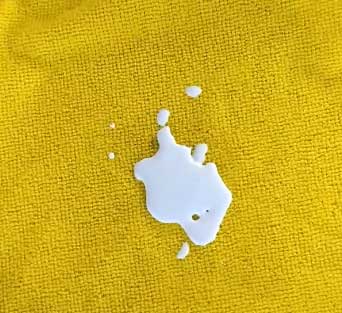
As much as I love PlastX, it’s not a miracle worker.
Those deep scratches on my windshield?
It softened their appearance, but they didn’t disappear completely.
If you’re dealing with gouges that you can feel with your fingernail, you’ll likely need to sand the surface first with fine-grit sandpaper (1500 or 2000 grit) before applying PlastX.
It’s great for light to moderate damage, but don’t expect it to fix everything.
- Requires Elbow Grease
If you’re hoping for a quick swipe-and-done solution, PlastX might disappoint. It takes effort, especially by hand. On my Accord’s headlights, I had to work in small sections, applying steady pressure for a few minutes per side.
Using a buffer helps, but not everyone has one lying around. Be prepared to put in some sweat equity for the best results.
- Inconsistent Results on Different Plastics
I noticed PlastX performs better on some plastics than others. It worked like a charm on my Honda’s headlights but didn’t do much for the foggy taillights on my old Pontiac.
I’m not sure if it’s the type of plastic or the level of damage, but the results can vary. You might need to experiment or pair it with other products for stubborn cases.
- Temporary Results Without Maintenance
While PlastX does a fantastic job, the results aren’t permanent. Without regular maintenance or a UV-protectant sealant, that yellow haze can creep back, especially on headlights exposed to constant sunlight.
I learned this the hard way when my Accord’s lights started clouding up again after a few months. It’s not a dealbreaker, but it means you’ll need to stay on top of things.
Maintenance Tips To Maximize PlastX Performance
- Prep Your Surface Properly
Before you even open the PlastX bottle, make sure your plastic surface is clean. Dirt or grime can get ground in while you’re polishing, creating new scratches. I wash the area with mild soap and water, then dry it with a microfiber towel.
If the plastic is heavily oxidized, consider wet-sanding with 1500-grit sandpaper first. It sounds intimidating, but it’s just a matter of soaking the sandpaper, sanding gently in one direction, and wiping away the residue. This gives PlastX a smooth canvas to work its magic.
- Use the Right Applicator
The applicator you choose matters. I’ve tried everything from paper towels to cotton rags, but microfiber cloths or foam pads give the best results. They’re soft enough to avoid scratching and absorbent enough to hold the gel without wasting it.
Apply a small amount of PlastX—think pea-sized for a headlight—and work in small, circular motions. Don’t slather it on; a little goes a long way.
- Seal for Longevity
To make your results last, follow up with a UV-protectant sealant. I use Meguiar’s Headlight Coating, which sprays on and keeps oxidation at bay for up to a year.
Apply it after polishing, once the plastic is clean and dry. If you don’t have a sealant, even a layer of car wax can help. This step is crucial for headlights, which take a beating from sun and weather.
- Regular Touch-Ups
Don’t wait until your plastics are a mess to use PlastX. I’ve gotten into the habit of touching up my headlights and windshield every few months, especially before long road trips.
A quick five-minute polish keeps them clear and prevents major buildup. It’s like brushing your teeth—regular maintenance is way easier than fixing a big problem later.
- Store It Right
PlastX is a gel, so it can dry out if you’re not careful. I keep mine in a cool, dry place, tightly sealed, and give it a good shake before each use. If you live in a hot climate, avoid leaving it in your car or garage where it can bake.
A little care extends the bottle’s life, and you’ll always have it ready for the next job.
Comparing PlastX To Other Brands
- 3M Plastic and Lens Polish
I’ve been a fan of 3M products for years, so I was curious how their Plastic and Lens Polish stacked up against PlastX. 3M’s formula is solid, especially for headlights and taillights, and it’s great at removing light scratches.
However, it’s a bit more aggressive, which can be a double-edged sword. On my Pontiac’s taillights, it cleared some haze but left faint swirl marks if I wasn’t careful. PlastX, with its diminishing abrasives, feels safer for delicate surfaces like plexiglass.
3M also comes in smaller bottles, making PlastX the better value for frequent use.
- Novus Plastic Polish
Novus is a go-to for many detailers, especially for acrylics and plexiglass. Their three-step system (Novus 1, 2, and 3) is thorough, but it’s overkill for minor jobs.
I tried Novus 2 on my boat’s instrument panel, and while it polished nicely, it didn’t tackle scratches as effectively as PlastX. Novus is also pricier and requires multiple products for the best results, whereas PlastX is a one-step solution.
If you’re working on vintage plastics, Novus might have an edge, but for everyday car care, I stick with PlastX.
- Plexus Plastic Cleaner
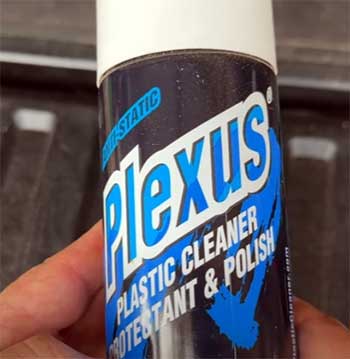
Plexus is a favorite in the motorcycle world, known for its spray-on simplicity.
I used it on my Spyder’s windshield before discovering PlastX, and it’s great for quick cleanups and adding shine.
But when it comes to scratches or heavy oxidation, Plexus falls short.
It’s more of a maintenance product than a restorer, unlike PlastX, which can handle both.
Plexus also costs more per ounce, and I found myself going through cans faster than I’d like.
For serious restoration, PlastX wins hands-down.
- Turtle Wax Headlight Restorer
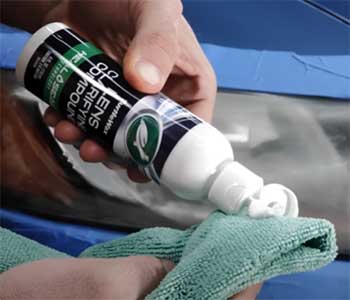
Turtle Wax’s Headlight Restorer Kit is popular for its all-in-one approach, including sanding pads and a sealant.
I gave it a try on a friend’s car, and it worked well for heavily oxidized headlights, thanks to the sanding step.
But for lighter jobs, it’s overcomplicated compared to PlastX’s grab-and-go simplicity.
The kit’s polish alone isn’t as effective, and you’re paying for extras you might not need.
PlastX is more versatile and doesn’t require you to commit to a multi-step process.
Frequently Asked Questions (FAQ)
Meguiar’s PlastX is a clear plastic cleaner and polish designed to restore clarity to uncoated plastics. It removes light scratches, cloudiness, yellowing, and oxidation from surfaces like headlights, taillights, plexiglass, and convertible windows. Its Microscopic Diminishing Abrasive Technology (MDAT) gently polishes while leaving water-resistant polymers for protection. Think of it as a one-stop shop for making your plastics look new again, improving both appearance and functionality, like brighter headlights for safer nighttime driving.
Yes, PlastX can remove light to moderate scratches from clear plastics. I’ve used it to soften scratches on my motorcycle windshield and car headlights, and it works by gently abrading the surface to smooth out imperfections. However, deep scratches—ones you can feel with your fingernail—may require sanding first. It’s not a cure-all, but for surface-level scuffs, it’s highly effective with some effort.
PlastX is designed for clear plastics, not black or colored plastics. I haven’t tried it on black trim, but the label warns against using it on painted or coated surfaces, which many black plastics are. For black plastic trim, you’re better off with a dedicated product like Meguiar’s Ultimate Black or a trim restorer. Stick to clear plastics with PlastX to avoid potential damage or uneven results.
Meguiar’s doesn’t specify an exact grit equivalent for PlastX, as its diminishing abrasives change as you work. However, based on my experience, it feels similar to a very fine polish, roughly in the 3000–4000 grit range when fully broken down. It’s gentle enough for delicate plastics but still effective for light correction. If you need more aggressive sanding, start with 1500–2000 grit sandpaper before applying PlastX.
Conclusion: Grab Plastx And See The Difference
I can’t recommend Meguiar’s PlastX enough. It’s saved my motorcycle windshield, revived my car’s headlights, and even polished up my boat’s plastics—all for the price of a coffee run. You’ll love how easy it is to use and the clarity it brings to your plastics.
Whether you’re a car enthusiast or just want to keep your vehicle looking sharp, PlastX is a must-have. Pick up a bottle, give it a try, and see for yourself why it’s a staple in my detailing kit.
